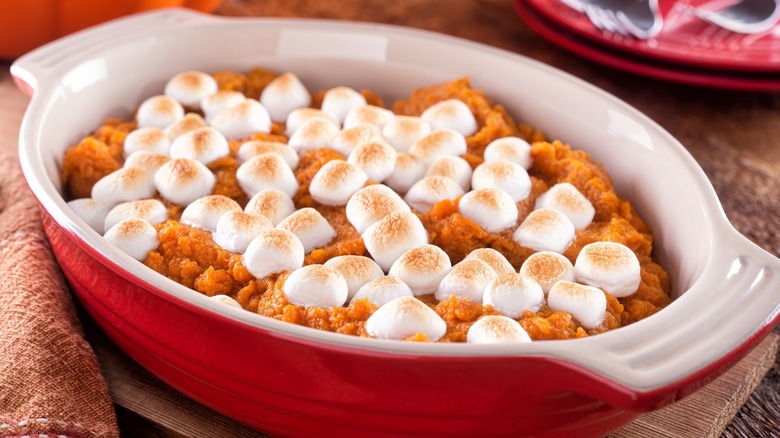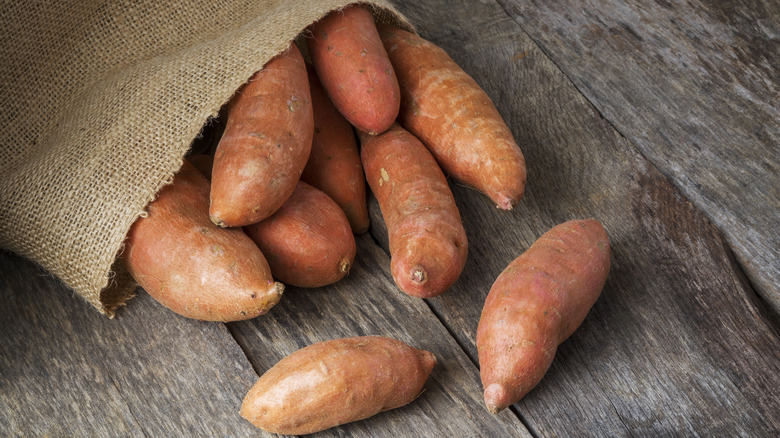Sweet Potato Casserole Is A Total Contradiction
When you picture popular Thanksgiving side dishes, certain mainstays immediately come to mind — such as mashed potatoes, green bean casserole, macaroni and cheese, and stuffing. The classics are predominantly savory items, but many people's feasts also include the sugary outlier of sweet potato casserole.
A relative youngster on the Thanksgiving scene, sweet potato casserole has only been around for about a century, per Smithsonian Magazine. However, sweet potatoes themselves were already being cultivated in the Americas by the time Columbus got there in the late 15th century. The first reference to a candied version of the casserole appeared in a 1918 recipe in the "Boston Cooking School Cookbook" attributed to Fannie Farmer that involved coating the sweet potatoes in a sugar syrup.
It was the marshmallow industry that introduced the sweet potato casserole as we know it today. A company called Angelus Marshmallows was trying to find ways to convince people to eat more marshmallows, then hooked up with the aforementioned Boston Cooking School for a sweet potato casserole recipe topped with marshmallows that has since endured (via Vice). Sure, it's lasted a century, but let's face it, sweet potato casserole is a total contradiction: You're basically mixing candy with your vegetables, which are supposed to be healthy.
Vegetables never tasted so sweet
Sweet potato casserole is kind of like your parents trying to trick you into eating vegetables as a kid by hiding sweet potatoes in your brownies or carrots in your mac and cheese. Sure, you're ultimately getting your vegetables, but at what cost? Sweet potatoes by themselves are an excellent source of fiber and are rich in vitamins A and C, plus minerals such as manganese (via Healthline). When combined with sugar, butter, and marshmallows, though, the nutritious benefits seem to be a tad offset.
As an immigrant who moved to the U.S. and has been immersed in the American culinary scene, Scottish chef and food writer Aefa Mulholland noted the wacky concept of this unconventional combination and called it one of the country's "dishes that don't make sense" to her. But rather than bash something unfamiliar (probably not a lot of Americans would instantly appreciate the appeal of Scotland's national dish, haggis, either) Mulholland explains how she has tinkered with the sweetness in the recipe to lower the sugar quotient and adapt it to her taste preferences. Her version replaces the standard marshmallows with just a little bit of brown sugar and orange juice.
If you're looking for a veggie recipe sans marshmallows that still delivers a bit of the sweetness factor, check out our sweet potato casserole recipe that calls for brown sugar, vanilla extract, and pecans. It's much easier than trying to stick a whole sweet potato inside a brownie.

